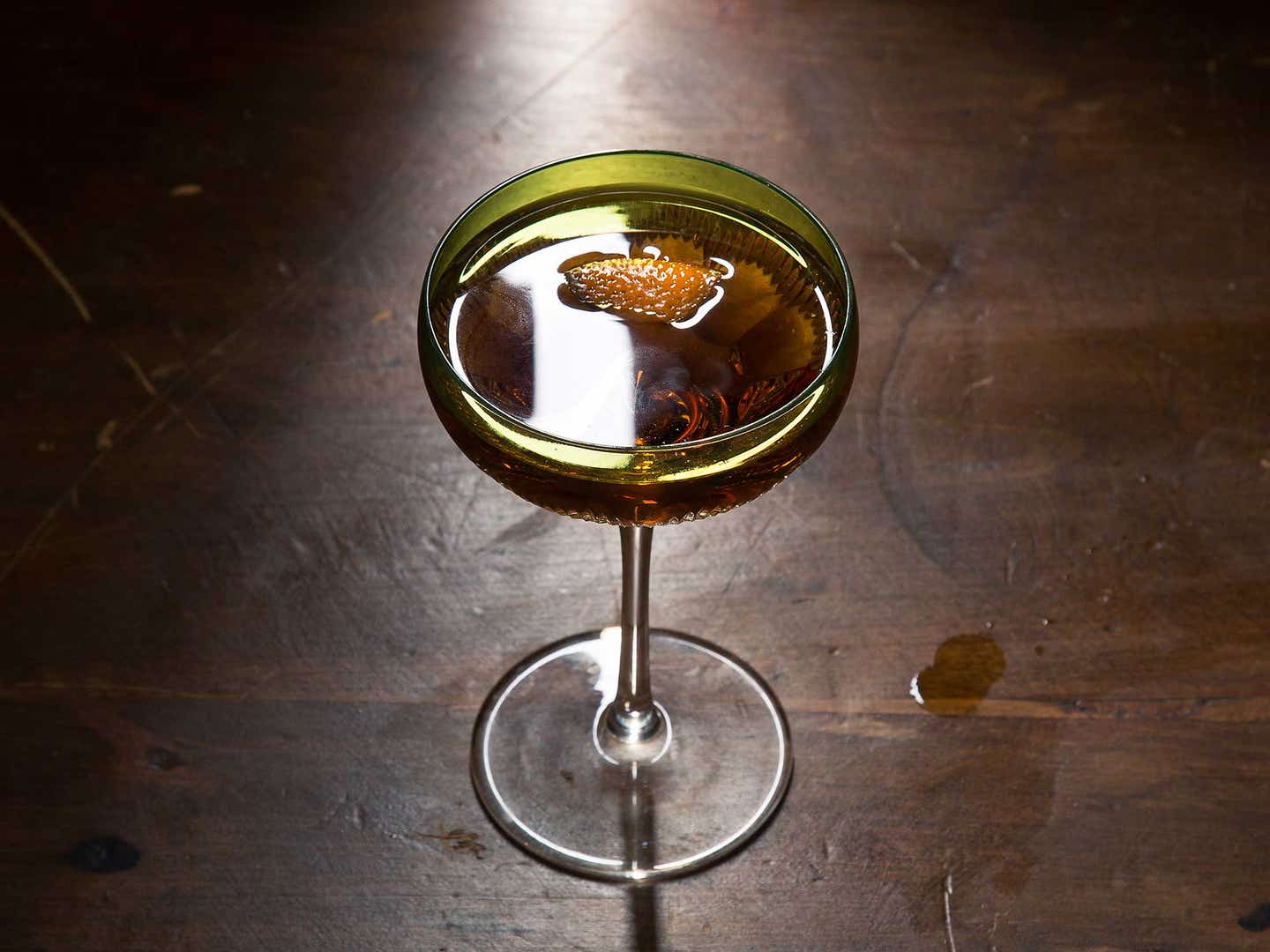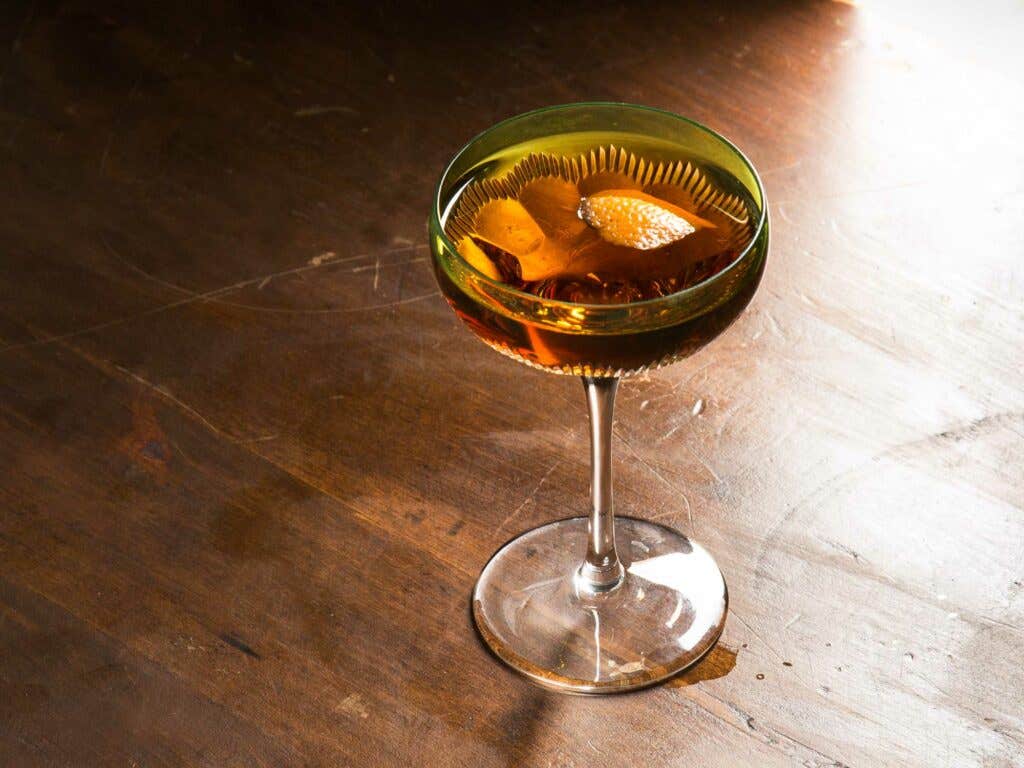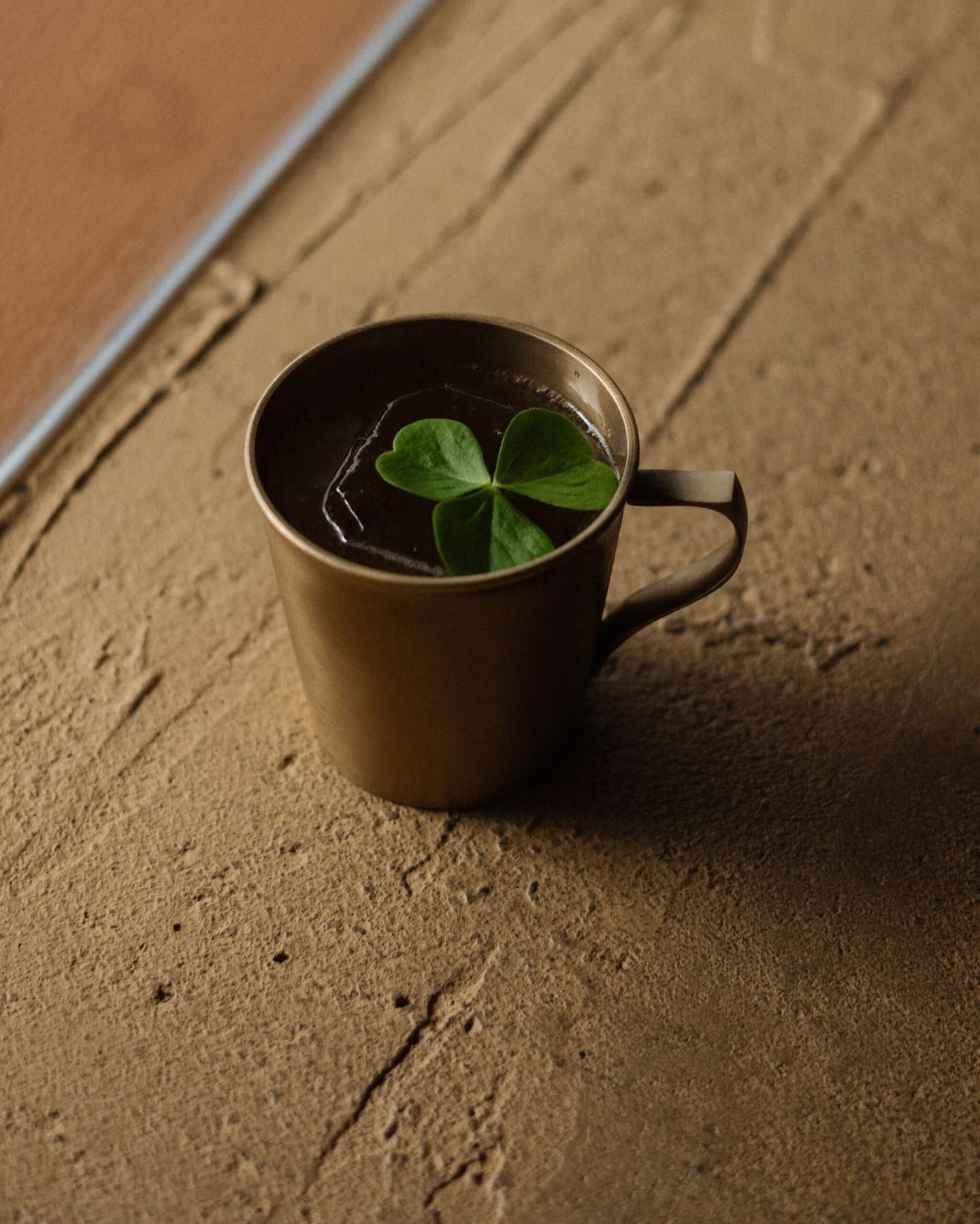
An orange or lemon twist atop a cocktail: that ranks as a straightforward garnish. A flaming twist, with the citrus oil erupting in a quick burst of fire? That’s PhD-level bartending. But with a little practice, the technique is surprisingly easy to master—and not only impresses the hell out of your friends, but adds a distinctive dimension of smoky, almost burnt flavor to your cocktails.
Every cocktail garnish—well, perhaps every cocktail garnish other than an umbrella—serves two essential purposes: to impart an aroma or flavor to the drink, and to add visual appeal. A flaming twist’s pyrotechnics make it a showstopper of a garnish.
Why is a twist an opportunity to play with fire? When you’re using a standard twist, you’re spraying a citrus fruit’s essential oils over the surface of a drink—and these oils happen to be flammable. That’s what you’re setting aflame just over the surface of your cocktail: at once spritzing those oils and burning them, for that charred-fruit aroma (and bonus pyrotechnics).
Not every drink takes well to a flaming twist; the aggressive smokiness will overpower any delicate ingredient, and can clash with bright, summery flavors. (Burnt orange oil on a sparkling St-Germain cocktail? On a gin martini? We’ll pass.) Save the flame for robust drinks that you want to take on that strong aroma. Any spirit that itself has a smoky dimension is an obvious candidate for a flaming twist: A Scotch Old Fashioned, say, or any riff on a Scotch sour. Smoky mezcal, made from agave hearts that are roasted in underground ovens, is another smart pick.
In general, bigger brown spirits can stand up to the smoke, American whiskey chief among them (think of the flavor synergy between sweet bourbon and smoky barbecue). Dark rums, aged tequilas, and even brandy can work, in some cases. A Sidecar with a flamed orange twist is quite a different drink from the classic, but a compelling one.
The Technique
Cut a thick, coin-shaped section of peel, an inch or more in diameter, from an orange or grapefruit. (Limes and lemons tend to express less oil and aren’t quite as flammable.) Hold the peel in one hand, skin side down, about six inches above the surface of the drink.
Light a match and pass it back and forth along the surface of the peel, the head of the match an inch or two from the skin, to warm it up (this doesn't make a bigger flame, but it does contribute a little more charred flavor to the end result—and adds a little suspense and drama, too). Aim the peel over the drink and quickly pinch your fingers together, pulling the edges of the peel to a point, which will spray the citrus oils—which should immediately ignite in a burst of flame—onto the drink in a precise jet. Run the flamed peel's skin around the rim of the glass and leave it in the drink. (Didn’t get an impressive enough flame? Try again with another peel, but know that the more times you attempt this, the smokier your drink will end up.)
Try it in This

Put your new flamethrowing skills to work in this riff on a Martinez, which substitues earthy, smoky mezcal for gin. Its smokiness gets amplified by a flaming orange twist while Cynar brings in a complementary bitterness, balanced out with sweet vermouth and Luxardo Maraschino cherry liqueur.
Keep Reading
Continue to Next Story










